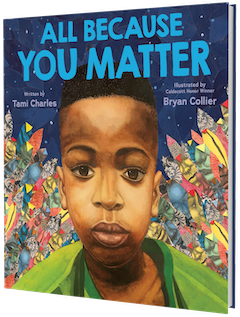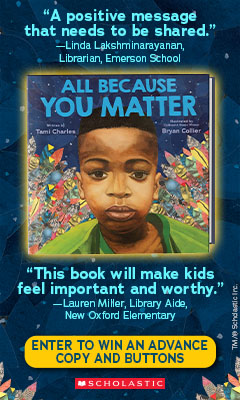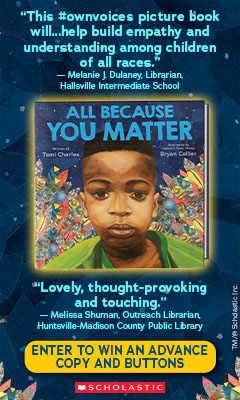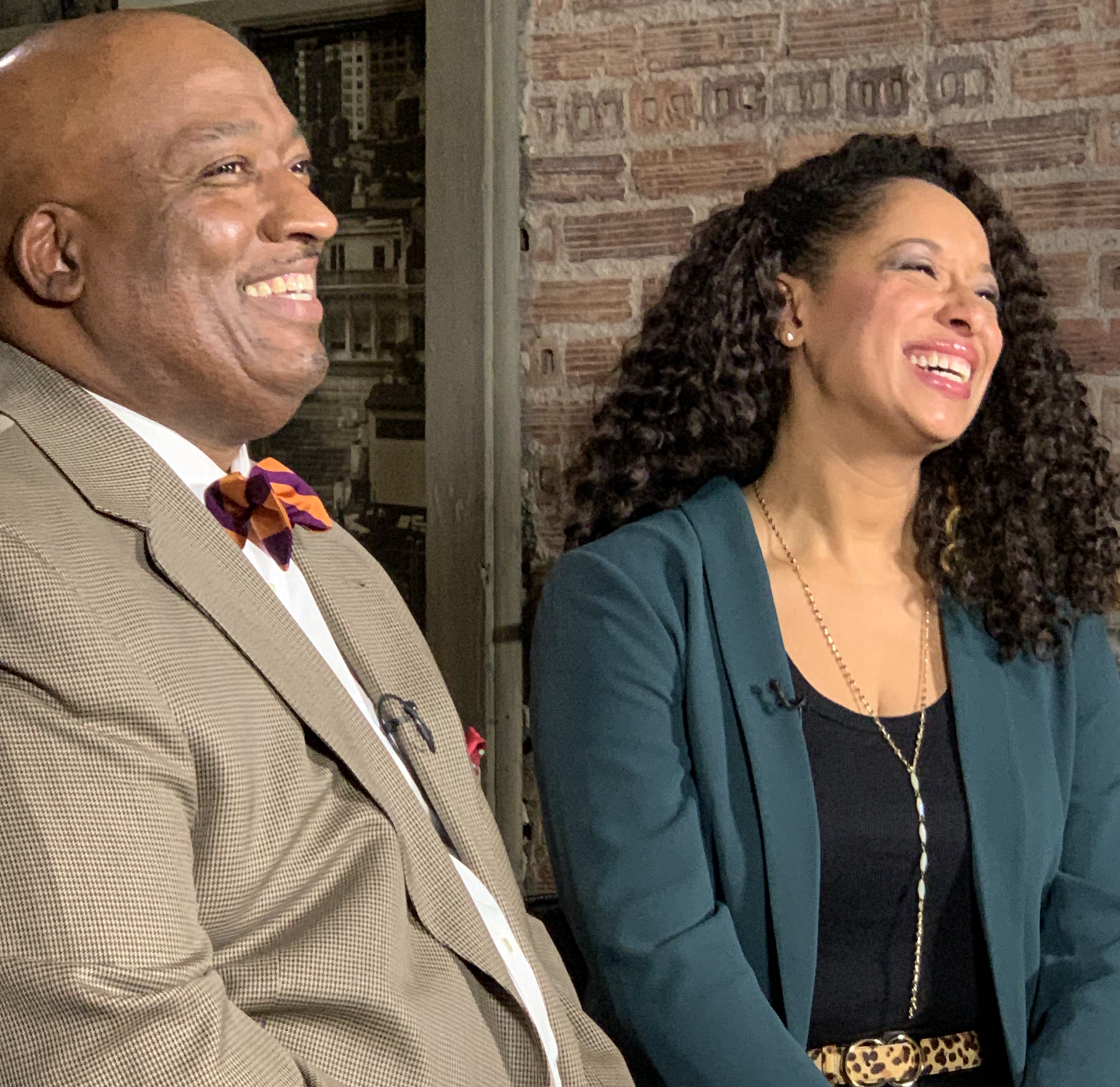All Because You Matter
by Tami Charles, illus. by Bryan Collier
Tami Charles, author of picture books Freedom Soup (illus. by Jacqueline Alcántara) and Fearless Mary (illus. by Clair Almon), collaborates on her third picture book, All Because You Matter, with Coretta Scott King Illustrator Award winner and four-time Caldecott Honoree Bryan Collier. A story that identifies the importance of our ancestors as well as our present and future selves, All Because You Matter tackles topics such as bullying, racial profiling and the discovery of one's identity. Charles's graceful text and Collier's evocative illustrations work together to make conversations about these topics easier to have with children.
All Because You Matter begins with a Black couple awaiting the birth of their child. They lovingly place their hands on the mother's belly: "They say that matter is all things that make up the universe: energy, stars, space.... If that's the case, then you, dear child, matter." Long before this child's birth, his ancestors dreamed of him "like a knapsack full of wishes, carried on [their] backs as they created empires, pyramids, legacies." In Collier's vibrant collage and watercolor illustrations, parts of the ancestor's faces--an eye, a mouth--can be viewed. While the individuals featured are a mystery, it is easily understood that what they have dreamed of, fought for and built was all in service of the child who is about to be born.
A shooting star announces the child's birth, and the page turn shows his first steps, happiness on his mother's face as she watches her son accomplish this feat. She smiles with arms outstretched, watching her "hobbling, wobbling, toppling" son. The mother and child share other firsts together, including his first words and the first time she reads him a story that has characters with the "same hair, same skin, same dreams" as him: "a mirror staring back at you," she calls it. As the mother and son read together, they are transported to faraway places; she continues to read books that feature characters like him to show him that "he matters."
When the child goes to school, he notices his classmates snickering when they hear his name because they think it is difficult to pronounce. In the classroom, a Muslim girl wearing a hijab is the focal point of the illustration, a solemn look on her face. This central image puts the boy in the background, showing that Charles's words go out to all Black children. As the boy grows, he experiences life's standard hardships. He fails a test and questions his worth. An aerial view shows the child slumped at his desk, head in hands, red x's on the paper in front of him. The perspective highlights his smallness, the ridges of his spine, depicting vulnerability. "You'll see a letter, big, bold, red on the page, and you will question if you, your work, and your effort matter."
When the child spends time with Pop Pop, he notices the injustices in the world. The videos on TV are of people taking a stand, taking a knee, marching and protesting for the rights of people that look just like him. With eyes closed, a collage of people protesting in the background, he hears "Pop Pop's whispered prayers, as another name is called: Trayvon, Tamir, Philando, and you wonder if they, or you, will ever matter." With the next page turn, the collage of ancestors returns behind a portrait of the boy, partial faces of men and women in hues of blue, yellow, green and red--a reminder that this child was thought of and prayed for long ago.
Charles's lyrical text describes the emotional relationship of BIPOC parents to their children: the hopes, the dreams, the fears, the realities. The list of names of innocent Black people killed through police violence shows not only a parent's fear and anger but also a child's understanding--they are thinking about who they are, and wondering if their lives have meaning. Charles's repeated calls to the ancestors and use of the word "matter" drive home the idea that Black children are born with purpose and hope--even when children make mistakes, their lives still matter. Collier's signature watercolor and collage images use white (but most certainly not blank) space powerfully, leaving room for Charles's text while still allowing for numerous double-page spread illustrations. His realistic drawing of the young boy--with big brown eyes and skin, long eyelashes and a fade haircut--makes the child come alive. Throughout, Collier uses a single flower petal shape "to build a blossoming effect in all backgrounds." This serves as a reminder that the lives of BIPOC children and their ancestors are not a mistake--those who have been born and lived before us both rooted for successive generations and also root us in time, history and family. Collier even directly connects the child in this book to his ancestor David Drake by focusing a double-page spread on Black hands in much the same manner as he did in his Caldecott-honored Dave the Potter. Like a garden, the ancestors bloom around the boy, shouting "you matter." --Kharissa Kenner










 Bryan Collier
Bryan Collier